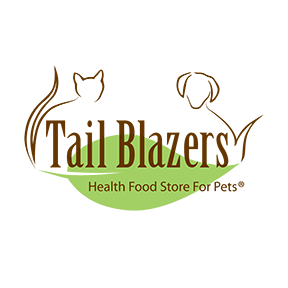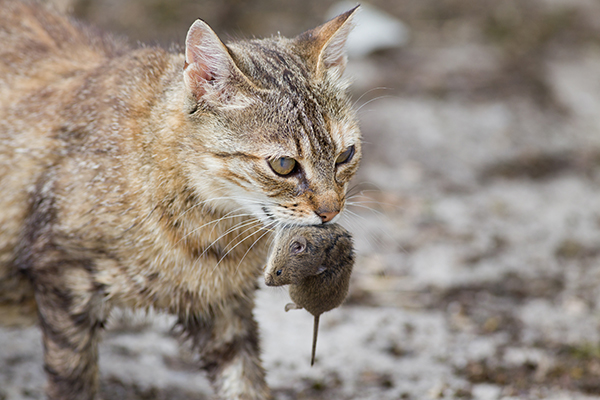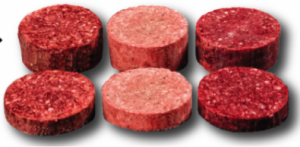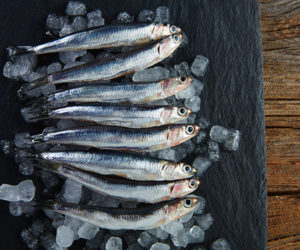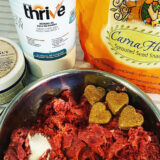Domestication vs Evolution
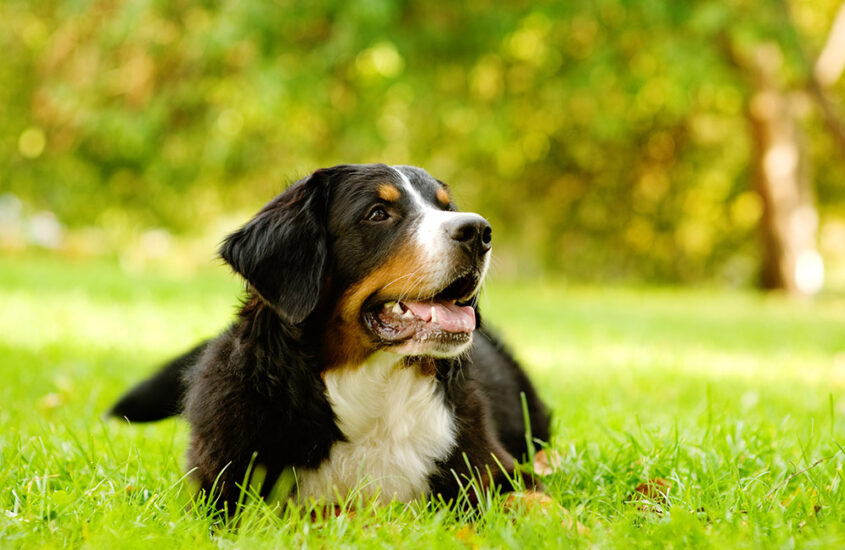
Hello everyone!
I am Andrew one of the owners of the Tail Blazers Etobicoke store. I want to address a topic that has recently come up within the environment of our health food store for pets. That topic is Domestication vs. Evolution. As a society, we have domesticated our companion animals over 10000 years (but even more recent data shows it was 32000 years ago). That is a fact (except for maybe the thousands of feral dogs and cats living in every city in the world…would we call them “domesticated”?). However, that domestication has not at all led to any evolutionary changes – which takes approximately a MILLION YEARS – in the way that our companion animals should be nourished in order for them to survive and thrive.
I come from a 20 year career in the human health care field. Combined with my formal, post-high school education, I have spent more than half of my life studying, researching and promoting many of our amazing advancements in research, science and medicine. I have a Bachelor of Science in Pharmacology and Toxicology. I have a Master of Science in Medical Sciences. I am a published researcher. I have been a basic researcher, clinical researcher, and heavily involved in the sales and promotion of some of the most important medical devices we as humans have ever invented. Products used to save lives… every single day, all around the world.
I am a 100% believer in the research, scientific and medical breakthroughs we as a society have made to improve and extend our lives.
I am also a 100% believer in the advancements in food science and nutrition – especially ones that have provided clean water, and improved crop and livestock yields required to feed more and more people on our little planet.
The medical and scientific advancements have run along in parallel with nutrition for some time. We do live longer lives. No doubt about that. However, while we have been making these advancements in medicine and nutrition, we also created a society of fast food and convenience. That society created packaged foods laden with preservatives, salts, and other man made “nutrients”. That societal need or want has made its way to the nutrition of our companion animals in the forms of kibbles, canned foods etc. Although we have domesticated our companions for thousands of years, these convenience foods have only been around for about 100. What were our furry friends eating before this? What should they be eating?
These questions can easily be answered by looking at science – anatomy, physiology and biochemistry.
We can learn about what WE should eat as humans to nourish and thrive as well.
I agree 100% that the medical research community has helped us live much longer lives. Humans can now live 80, 90, even 100+ years in some cases because of our advancements. However, when should we ideally be taking advantage of the medical advancements that we have created? Should we stay healthy until 60? 70? How should we ideally stay as healthy as possible in those years? Our fitness and medical industries have really focused us on PROPER healthy nutrition. What does that mean for us as humans? Let’s look at anatomy, physiology and biochemistry.
I am going to be quite quick and simple on this. It really should not be that difficult. Start with the mouth. Our teeth tell us what we are designed to eat and what we have evolved to eat. We don’t really have canine teeth anymore. Sure some people have longer ones than others. My dentist actually shaved mine down years ago for aesthetic reasons – so maybe I should be more carnivorous! But joking aside, we do have sharper teeth that chew, to some extent, meat based foods. We also have plenty of flat molars designed to grind up plant matter. Enzymatically, we also have plenty of an enzyme called amylase in our saliva. That enzyme is designed to start the digestion of starches. So, right from the beginning of our digestive tracts we see that we are designed for some, probably smaller amounts of animal proteins, and more plant matter including starchy grains.
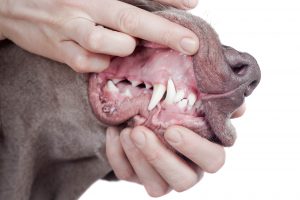 If you quickly look at the mouths of our companion animals what do you see? Do we see flattened grazing animal-like teeth designed to grind up plant materials and grains? Do we see large chomper type teeth required to crop grasses. No. We see very large canines designed to rip flesh and other very sharp teeth designed to begin the chewing and digestion of animal flesh, fat, organs and yes, bones. Enzymatically you find very little, almost no, amylase. Dogs mouths contain very little, and those of cats contain none. They don’t have the tools to digest starches right from the start of their digestive systems the way we do.
If you quickly look at the mouths of our companion animals what do you see? Do we see flattened grazing animal-like teeth designed to grind up plant materials and grains? Do we see large chomper type teeth required to crop grasses. No. We see very large canines designed to rip flesh and other very sharp teeth designed to begin the chewing and digestion of animal flesh, fat, organs and yes, bones. Enzymatically you find very little, almost no, amylase. Dogs mouths contain very little, and those of cats contain none. They don’t have the tools to digest starches right from the start of their digestive systems the way we do.
Let’s look to the physiology of the human digestive system very quickly. We start in a pretty acidic stomach. Stomach acid helps to break down cell walls and to activate other enzymes called proteases used to help us digest proteins – mostly meat proteins. Then our diet enters a very long system – I am talking about 9 metres long, including about 7 metres of small intestine that is required to digest plant based material and absorb all of our nutrients. It is literally a long and winding road that is required to do that. This system is full of plenty of other enzymes and compounds to help digest all of the other components of your food – starches and plant cell walls included. Our system is pretty well designed to eat the omnivorous diet that many people maintain, or the plant-based diet that much of the inhabits of our planet consume.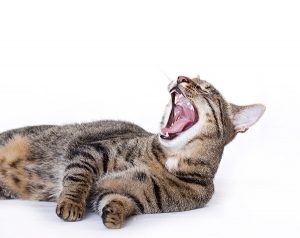
Now, let’s look at what we have in our companion animals. We do start with that highly acidic stomach -full of acids and enzymes designed to digest animal products. But where do we go from there? The digestive system of a dog is about 4.5 metres and that of a cat is about 2 metres. The dogs’ system is better at breaking down plant materials – they have longer small intestine and more but limited enzymes to do so. Dogs are still generally considered carnivores but they have capability to function and survive on the omnivorous side – but more with plants and fruits – not starchy produce like wheat, soy, corn and limited ability for rice and potato. Cats on the other hand are obligate carnivores. Obligate – the root of OBLIGATION – to bind or compel, to restrict to a particular function.
Biochemically, dogs and cats function at a lower pH. This includes their urine. Lower pH means higher acidity. And more acid is reached by consuming a diet high in animal based proteins. You have probably heard something about “alkalizing” diets for humans – that humans should exist in a more alkaline or basic biochemical environment. That comes from a diet higher in plant based foods. That means we should have higher pH levels or more basic or alkaline bodies. What should we be eating to help extend our lives and thrive? We are told to eat from the outer rows of the grocery store – more fresh real food – fruits, vegetables, whole grains, in some cases lean meats.
Now, as much as I believe in the advancements in human medical science, I believe in the veterinary medical sciences – many of which have been developed as we have, fortunately or unfortunately, tested human medicines and medical products on animals. But similarly to the question that I asked regarding at what age should humans begin take advantage of the medical advancements in our healthcare system, what age should dogs and cats enter the veterinary system. Can we see dogs living 20 years? Can we see cats living 25+ years? It has happened. So at what age is PROPER nutrition not enough? Is it 14 years for a dog? Is it 16, 17, 18 years for a cat? Can we get them there with the PROPER diet that their bodies are designed for?
If we are being told to eat more whole, real fresh foods, should our companion animals also not eat the same? Does that seem like too obvious a question? What do the vast majority of dogs and cats eat? You know the answer – processed, cooked, sometimes nutritionally void kibbles and canned foods, where nutrition must be added in the form of human made synthetic ingredients . Now wait a second. Doesn’t this sound just like the processed packaged fast foods that we, as humans, started to fall into in the 60s and 70s for convenience? And where have we come? Full circle back to unprocessed, whole real foods. So, what does our discussion regarding dog and cat anatomy, physiology and biochemistry tell us they should be eating? A few thousand years of domestication has not caused any evolutionary changes to the point where dogs and cats should eat anything other than – RAW animal flesh, fat, organs and bones. And in the case of dogs – some limited plant materials – fruit, vegetables and botanicals (like grasses and maybe roots). Why do we continue to feed them the highly processed, nutritionally void kibbles? Is it “medicine” in a bag? Is it for our convenience? If we believe that eating healthy whole foods can help us stave off the healthcare system then should we not believe that we can do that for our animal companions as well?
The conclusion seems pretty clear…dogs and cats should eat what they have eaten for 10’s of thousands of years. That includes a real, whole food diet – ideally in a raw format. Think about it. This is the truth being discussed.
Pets have added years to our lives, now it is time we add some to theirs!
by Andrew Outinen, Co-Owner of Tail Blazers in Etobicoke, Ontario
After a twenty year career in human healthcare, Andrew made the big decision to bring his knowledge and experience together with his love for furbabies and open this health food store for pets in Etobicoke. Jenny is currently staying with her healthcare job, but she definitely helps out in the back-office whenever she can. Their three cats – 15 year old Ozzy (ginger short hair) and 8 year old bonded “sisters” Jasmine (white and grey tabby) and Jasper (Russian Blue) have become much healthier on a diet of Tail Blazers’ exceptional kibble, pouched wet foods, and supplements. We and our team are here to consult with you and find the best combination of diet, treats and supplements to help ensure that you add more years to your pet’s life!
